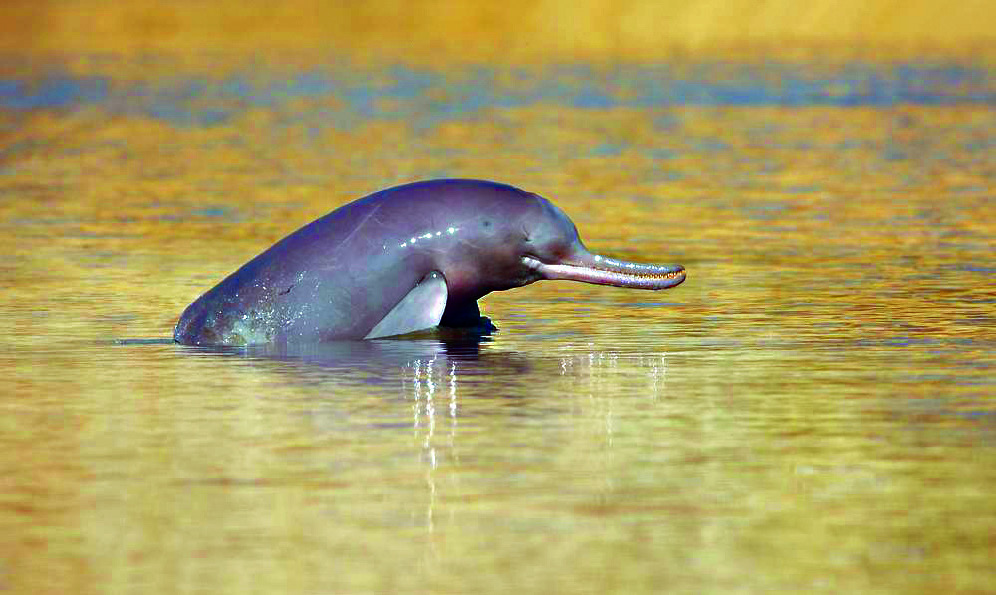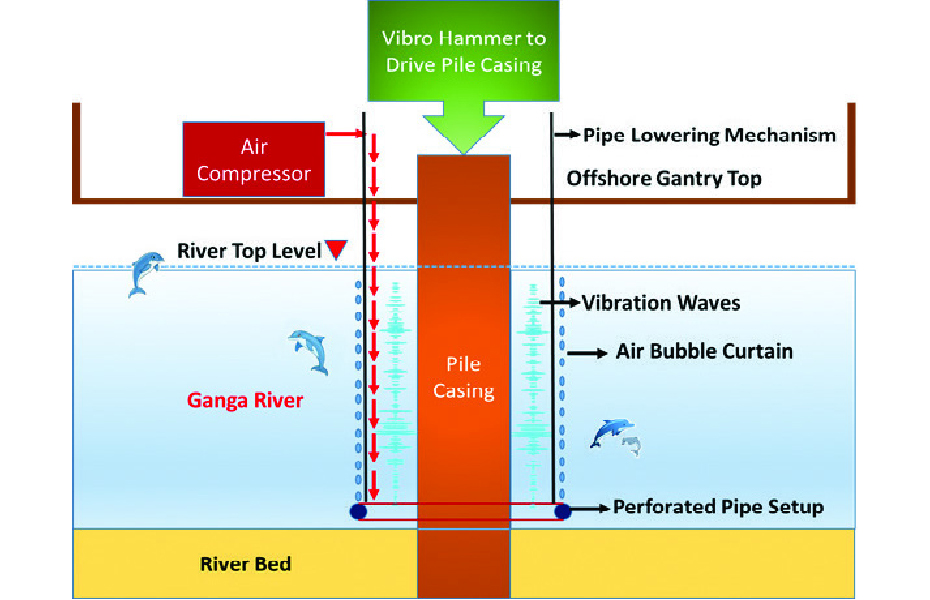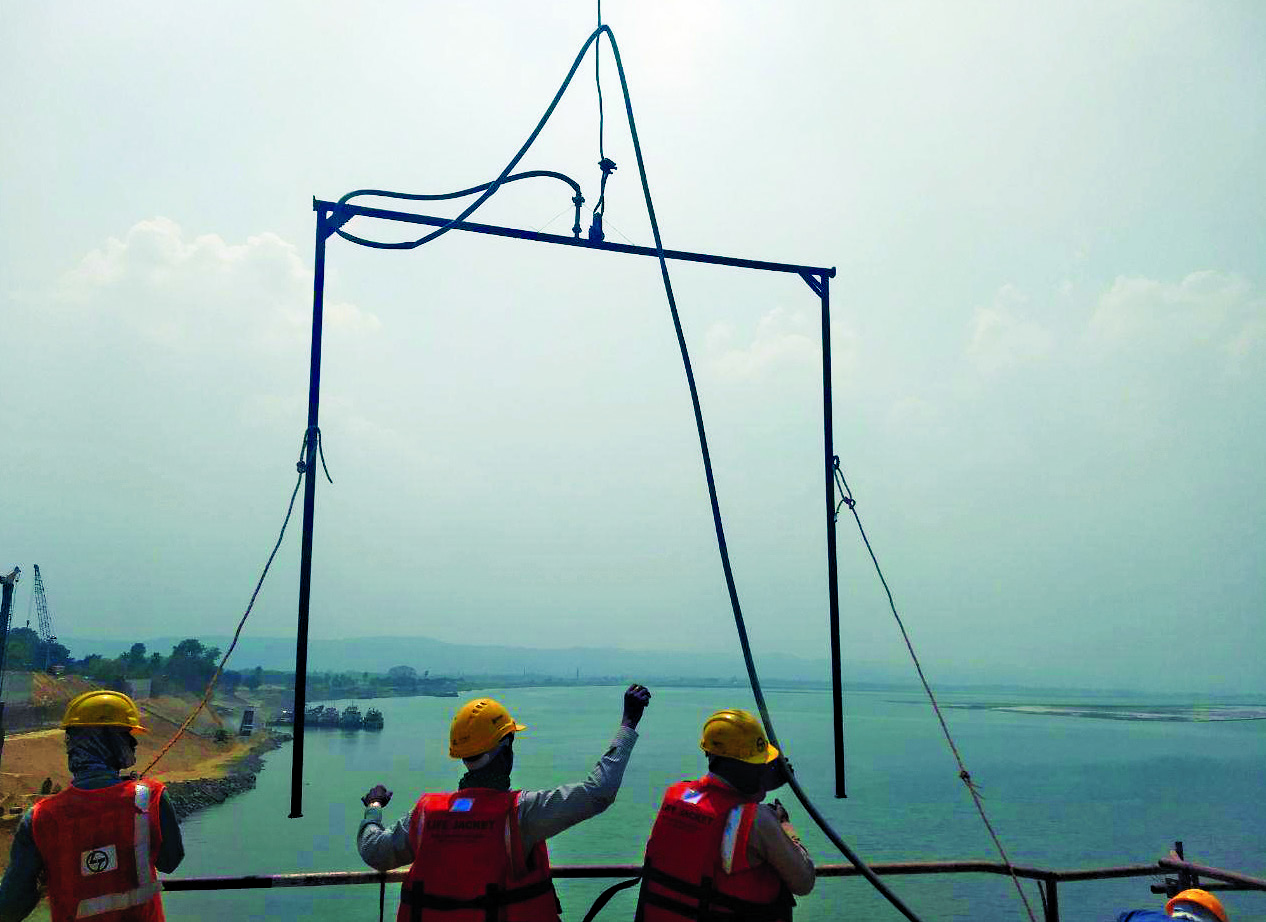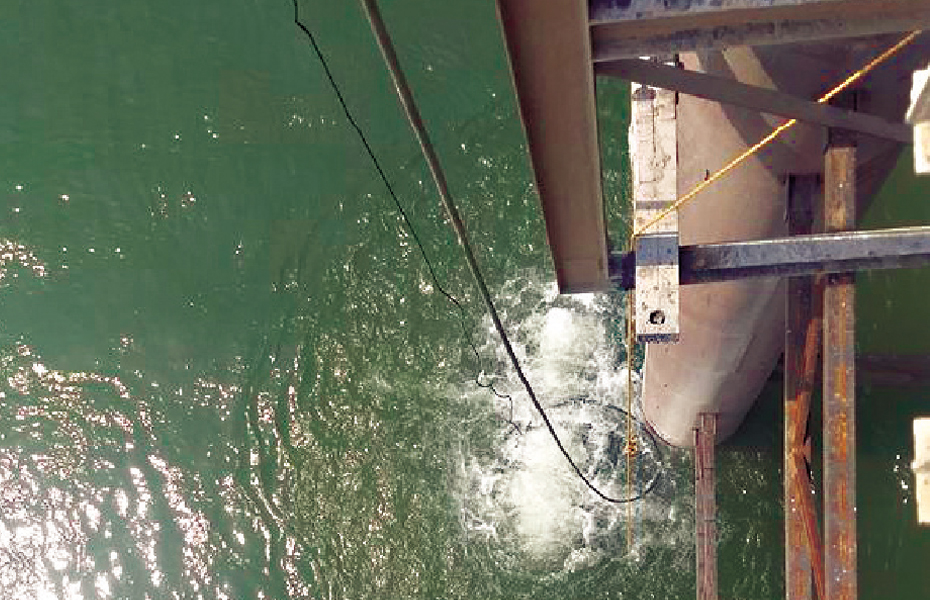SAVING LIVES! EVEN OF AN ENDANGERED SPECIES OF DOLPHINS!

The South Asian River Dolphin (Platanista Gangetica) is an endangered freshwater or river dolphin found in and around South Asia. The river dolphins have two subspecies: the Ganges River Dolphins (P. g. Gangetic with a population of around 3,500) and the Indus River Dolphins (P. g. minor with a population of around 1,500) and are among the four ‘obligate’ freshwater dolphins. The Ganges River Dolphins can only live in freshwater and are blind. They hunt by emitting ultrasonic sounds, that bounce off fish and other prey, enabling them to ‘see’ an image in their mind.
A project team from L&T GeoStructure have recently completed constructing the IWT Terminal at Sahibganj, Jharkhand. A partial offshore construction project, it involved a 270-meter jetty along the River Ganga using the end on piling gantry method in which the pile casing is driven using vibro hammers of high frequency that generates heavy vibration throughout the river depth.
“Our project location on the banks of the Ganges is an ecologically sensitive area and the habitat for many aquatic and endangered species including the Gangetic Dolphins that inhabit a 6000 km stretch of the rivers Ganges and the Brahmaputra,” informs Suresh Balu, Senior Engineer – EHS, Sahibganj Project, for whom this project within a project had assumed great relevance Being blind, these dolphins hunt by emitting ultrasonic sounds to ‘spot’ their prey and any deterioration of their hearing capability could endanger their very survival. “This was a major issue because we had to do 187 piles over the river and the dolphins could go deaf with the vibrations of our piling activity.”
“Our clients, IWAI and the World Bank, were very keen that none of the aquatic species in the Ganges, especially the Gangetic Dolphins, should be disturbed by our construction activities,” shares K P Ravinath, Head – EHS, L&T GeoStructure, “and so we had both contractual and moral obligations to preserve the endangered species for which we adopted a two-pronged approach of an engineering control and an administrative one.”
We had both contractual and moral obligations to preserve the endangered species for which we adopted a two-pronged approach of an engineering control and an administrative one.
K P Ravinath
Head – EHS, L&T GeoStructure
Dropping an air bubble curtain
To prevent the entry of dolphins into the piling area and to suppress the piling vibrations at the location itself, an ‘air bubble curtain’ was conceptualized along the upstream side of the piling zone that suppressed the vibration waves in the river. As its name suggests, the air bubble curtain generates artificial air bubbles in the water by means of passing compressed air into a perforated U‑shaped pipe that both reduces the propagation of shock waves during pile driving operations and diverts the movement of fish and aquatic animals away from the area of operations.

The setup consists of a U‑shaped perforated pipe, an air compressor, compressor pipeline and a pipe lowering mechanism. The setup is lowered into the river along with the pile casing to the required depth and compressed air is passed into the perforated pipe that produces air bubbles around the opening of the pile casing that will act as a barrier, preventing the entry of the dolphins into the vicinity of piling area.

While using the air bubble curtain was the engineering control, forming the Dolphin Conservation Committee to take the ecological and environmental hazards out of our operations was the administrative control we adopted.
Suresh Balu
Senior Engineer – EHS, Sahibganj Project
The Dolphin Conservation Committee
“While using the air bubble curtain was the engineering control, forming the Dolphin Conservation Committee to take the ecological and environmental hazards out of our operations was the administrative control we adopted,” says Suresh Balu, with obvious passion. “The committee has a chairman, secretary and four of our staff members with specified roles and responsibilities to protect the Gangetic Dolphins.”

Air bubble curtain set up being lowered close to pile location
In the committee, it was decided to halt the piling work on gantry (over the river) for a period of 20 minutes from the time of a dolphin sighting and use the air bubble curtain setup during the piling activity. A separate register for dolphin sighting has been maintained and every sighting recorded for future reference.
We had to do 187 piles over the river and the dolphins could go deaf with the vibrations of our piling activity.
Suresh Balu
Senior Engineer – EHS, Sahibganj Project

Contained air bubbles generated out of controlled vibration during piling operation
Suresh Balu is a happy and relieved man for by implementing these two control measures at site, he and his team have ensured that the dolphins were protected. “Instituting the Dolphin Conservation Program was one of our environmental safeguard measures that resulted in zero harm to the endangered Gangetic dolphins and other aquatic species of the Ganges,” he concludes with a hugely satisfied smile that he has been able to save some precious lives.